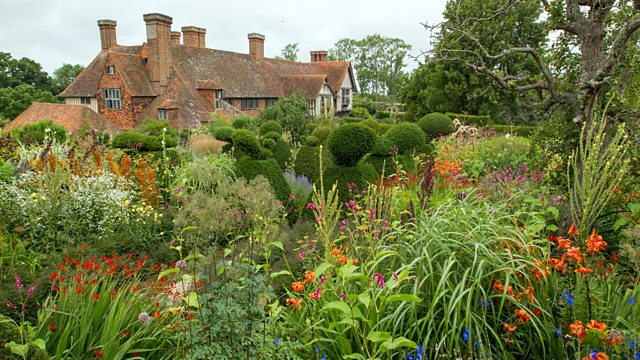British Gardens in Time – Great Dixter episode 1: Great Dixter lays claim to being the most innovative, spectacular and provocative garden of the 20th century. Made famous by the much-loved eccentric plants man and writer Christopher Lloyd, who used the garden as a living laboratory and documented his experiments in a weekly column in Country Life, Great Dixter began life as a Gertrude Jekyll-inspired Arts and Crafts garden surrounding a house designed by Edwin Lutyens.
The Lloyd family created Dixter just before the outbreak of the First World War with the intention of establishing a rural idyll for Christo and his five siblings. Dixter was to be both Christo’s horticultural nursery and the setting for his rebellion in late middle age as he finally threw off the shackles of his intense bond with his mother to make the garden and his life his own.
British Gardens in Time – Great Dixter episode 1
Great Dixter is a house in Northiam, East Sussex, England. It was built in 1910–12 by architect Edwin Lutyens, who combined an existing mid-15th century house on the site with a similar structure brought from Benenden, Kent, together with his own additions. It is a Grade I listed building. The garden, widely known for its continuous tradition of sophisticated plantsmanship, is Grade I listed in the National Register of Historic Parks and Gardens.
The original Northiam house, known as Dixter, dating from the mid-15th century, was acquired by a businessman named Nathaniel Lloyd in 1909. He had a 16th-century house in a similar style moved from Kent and the two were combined with new work by Lutyens to create a much larger house, which was rechristened Great Dixter. It is a romantic recreation of a medieval manor house, complete with great hall, parlour, solar and yeoman’s hall.
Lloyd and Lutyens began the garden at Great Dixter, but it was Lloyd’s son Christopher Lloyd, a well known garden writer and television personality, who made it famous. The garden is in the arts and crafts style, and features topiary, a long border, an orchard and a wild flower meadow. The planting is profuse, yet structured, and has featured many bold experiments of form, colour and combination. The garden is currently managed by Fergus Garrett, who worked closely with Lloyd up until his death in 2006 as Head Gardener and introduced a number of innovations into the planting scheme.
